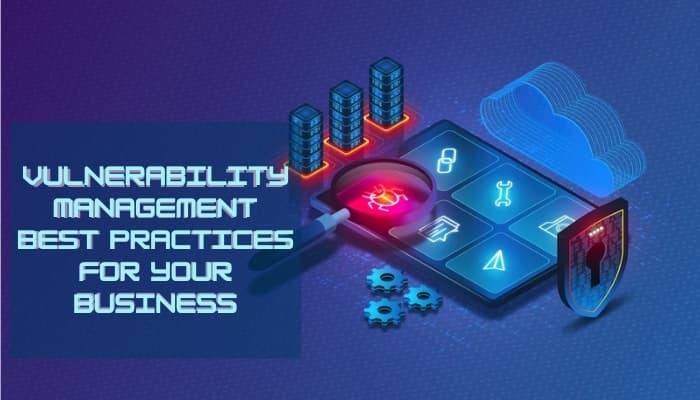Vulnerability Remediation is all about how you determine and address loopholes in your cyber security systems. There is no doubt that vulnerability remediation is essential for all organizations, especially those dealing with customers’ data and other information.
So, if you implement a good vulnerability remediation infrastructure, it can protect your systems from various cyber security threats. In addition, it will also save your organization from multiple internal and external frauds.
Industry-Use Applications of Vulnerability Remediation
To understand the proper meaning of vulnerability remediation, first of all, you need to understand the whole surroundings of your IT environment and the kind of risks on your assets (e.g., networks, applications, and related systems). A well-defined vulnerability assessment measures having multiple steps in remediation. And these steps are:
- Vulnerability scanning in the payment card industry
- Threat assessment in the healthcare industry
- Vulnerability remediation in the payment card industry
- Ongoing threat monitoring in government defense contracting
Vulnerability remediation helps organizations from frauds, attacks, and risks by looking into them monitoring and fixing cybersecurity vulnerabilities. No matter your industry and consistency prerequisites, the vulnerability remediation direction for the installation card industry, medical services, and government safeguard contracting will give any organization the complete systems to start.
Vulnerability Management Best Practices
How will you find out that you are putting efforts into vulnerability remediation for your business? For the sake of your information, we would like to introduce you to how to Remediate Vulnerable Software with HCL BigFix? So, here are vulnerability management best practices:
- Understanding your existing infrastructure
First of all, you need to create a working map of your network’s structure before you start focusing on and prioritizing vulnerabilities. This network map should have your organization’s hardware, software, and cloud infrastructure and both running and dormant applications, services, and systems.
More specifically, there should be transparency among the programs and the devices in which information flows. Your IT infrastructure map should consist of individuals responsible for each part of the technology. That will be helpful for your team to do coordination with the appropriate person for each threat and vulnerability task for any process.
2. Having the right scanning tools
There are various vulnerability scanning tools available in the market. But you need to know which is best for your business. The best vulnerability scanners help you to detect the fraud even before the time to protect you from colossal damage. So let’s look at some of the right tools to identify potential liabilities within your network.
3. Take advantage of continuous scanning
As everyone knows that there is an immense increase in the latest technologies, so any individual or an organization needs to get aware of the new stuff related to business networks. So, to compete with these recent changes, use automated vulnerability scanning tools that can detect risks and monitor your network correctly.
4. Observe internal and external processes
It’s mandatory to check vulnerability from outside and inside both. External vulnerability scanning protects your network from hackers entering and exploiting it. On the other side, internal scanning can detect the vulnerability lying within your network.
5. Choose authenticated software for internal scans
You need to use an adequately authenticated scanner to read the devices properly. Unauthenticated scanning tools can only guess the type of devices and operating systems running there. On the other hand, authenticated scanners don’t do any guesswork.
6. Involving your whole team
Your strenuous efforts scanning vulnerability into your network would fail even if you remediate all of your organization’s vulnerabilities. But unfortunately, this will not solve the greater risk to your organization. According to research by historical cyber claims, almost 90% of cyber attacks take place because of employee behavior.
There is no doubt that employees do not commit cybercrimes deliberately and put the organization at risk. Instead, employees usually cause vulnerabilities by mistakes, negligence, or ignorance.
7. Remediation practice for patches
Vulnerability patching is all about the practice of identifying vulnerabilities in your hardware, software, networks, and apps, resolving, and finally getting rid of those vulnerabilities. In patches, you will find changes you create to fix those vulnerabilities. The changes in patching include changes like system updates or coding changes.
8. Small businesses are also at risk
When we hear about cyber attacks in the news, the victims are usually large companies or governments. At our New Orleans headquarters, for instance, we have read countless articles about the recent hacks of Louisiana schools and government bodies.
You might have seen that big companies or governments are usually attacked for cybercrimes. For example, the U.S Department of Defense is executing new compliance requirements for
defense contractors for hire to guarantee that organizations working with the DoD have reasonable cyber security estimates set up. Be that as it may, cyberattacks also represent a significant threat to smaller organizations and associations.
Conclusion
All organizations need best practices of vulnerability remediation to protect themselves from all kinds of frauds and dangers before time. So, to sum up, the question, “What is the vulnerability remediation process?”
It is a set of the process of monitoring and determining cybercrimes before they happen to exploit the organization’s cybersecurity infrastructure.
